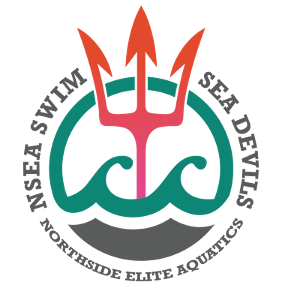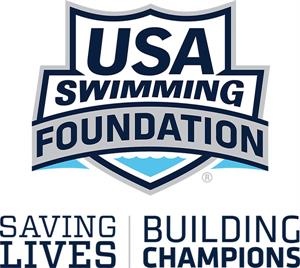A “First Timers” Guide to Swim Meets
The following is a brief guide to help those who may be attending a year-round swim meet for the first time. If you have additional questions or concerns, please email us at [email protected].
Thank you for being a part of NSEA Swim.
What to Bring - A sharpie, highlighter, water, snacks, stadium chairs, cash (to buy heat sheets), and a camera to take pictures of your swimmer. Also, keep in mind that the pool area will be warm so that kids in swim suits are comfortable. Make sure you dress in layers, as it can be hot inside!
Heat Sheets - Once you get to the meet, you will want to buy a heat sheet. These are packets of paper that list all of the races, swimmers, times, and heats during the meet. You can typically find someone selling heat sheets in the lobby of each pool. Heat sheets will show the events your child is swimming and indicate the heat and lane they will be in. Bring a highlighter so you can highlight your swimmer's name in the heat sheet and follow along.
Writing On Arms - Once you have purchased a heat sheet, locate all of your swimmer's events, heats, and lanes and write them on their arm with your Sharpie marker. This way, the swimmer will know when to report to the block. A good rule of thumb is to write this information on the right arm on the first day and the left arm the second day so you don’t have to write over the previous day's events. Please complete this before you send your swimmer on deck. Only swimmers, coaches, USA Swimming officials, and volunteers are allowed on deck.
When Is It My Turn? - Most year-round meets do not have “kid pushers” or a “clerk of course” like in summer league meets. Therefore, swimmers need to pay attention to what event is being called vs. the next number on their arms. Coaches are available to answer questions about this type of thing throughout the meet; however, getting swimmers to take responsibility and pay attention to the meet is an important component of their development as a swimmer.
Where Does My Swimmer Sit? – Typically, parents will sit in some type of bleachers at most meets; however, swimmers may need to bring chairs if they want to sit throughout the meet. The coaching staff recommends that swimmers stay off their feet and rest in between events and that they stay on deck rather than in the stands.
Snacks – Most meet sessions last approximately four hours, and your swimmer will need some food throughout the course of their session to fuel their efforts. Packing healthy snacks for them to nibble on during the meet will help. Many veteran swimmers find that packing small sandwiches, along with fresh or dried fruit, provides the energy they need and are convenient to pack, store, and carry. Also, swimmers need to be well hydrated. You should send them with a water bottle that can be refilled at the meet. Additionally, some swimmers like to have a sports drink available during the course of a meet session. Gatorade, Powerade, and Propel are popular choices.
Towels - Bring more than one towel. The swimmers dry off after warming up, and after each event. Having a dry fresh towel to use either later in the meet or once they are done and showering afterward is helpful.
Relays – Many of our meets have relays. Relay swimmers are decided by the coaching staff and are usually selected based on information provided by the computer on who the fastest swimmers are in each age group. Not everyone will have the opportunity to swim on a relay at all meets. It is VERY IMPORTANT that each swimmer check with the coaches BEFORE LEAVING each session to find out if they are needed for a relay. Often swimmers will leave without knowing they are on a relay. This causes the relays to be completely altered to accommodate the missing swimmer. Please remember: check out with one of the coaches before you leave each session!
Disqualifications (DQ’s) – DQ does not stand for Dairy Queen, and, most importantly, it is not fatal. It stands for disqualification. Beginning swimmers and world-class athletes receive disqualifications. There are a number of reasons a swimmer could be disqualified in each stroke. The officials will give a “DQ” sheet to the coaches so they know why the swimmer was disqualified. Then the coach can discuss with the swimmer what they did wrong and how they can correct the error for their next swim in that event or stroke.
Common Meet Locations
Triangle Aquatic Center (TAC)
- 275 Convention Dr, Cary, NC 27511-4257
- +1 919-459-4045
- http://www.triangleaquatics.org/
Greensboro Aquatic Center (GAC)
- 1921 W. Gate City Blvd Greensboro, NC 27403
- +1 336-315-8498
- https://greensboroaquaticcenter.com/
Dinah E Gore Fitness & Aquatics Center (BAC)
- 210 College Rd. NE, Bolivia, NC 28422
- +1 910-846-2348
- http://www.brunswickcc.edu/dinah-e-gore-fitness-aquatics-center/
David B. Allen Natatorium (UNCW / WOW)
- UNCW, 28403, Wilmington
- (910) 962-7946
- https://uncwsports.com/facilities/david-b-allen-natatorium/7
Mecklenburg County Aquatic Center (MCAC)
- 800 E Martin Luther King Jr Blvd, Charlotte, NC 28202
- (980) 314-3483
- https://www.mecknc.gov/ParkandRec/Aquatics/Pages/Aquatic%20Center%20Information.aspx
Optimist Park Pool
- 5902 Whittier Dr, 27609, Raleigh
- (919) 870-2882
- https://raleighnc.gov/parks/optimist-pool





